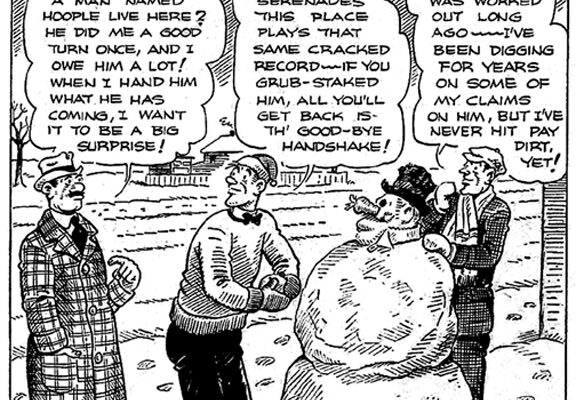A vintage boarding house (a.k.a. a lodging house or rooming house) referred to a home where the owners rented one or more of their rooms to paying customers. Room and board typically meant lodging and food for the guests. Initially, boarders shared washing and toilet facilities, but later each room normally had its own amenities. Depending on arrangements made with the landlord, duration of stay at a facility varied from a few days to several weeks to a year or more.
Boarding houses are mentioned in literature that date back before the Victorian period. Renting a room rather than a home made good sense. Income from such an arrangement could significantly augment the owners’ revenue, although it added additional work and expense for the renter from regular meal preparation and housekeeping chores.
An examination of old city directories reveals that Johnson City had eight boarding houses in 1909: Mrs. Mattie Almany (206 W. Main), Mrs. Hanna Coleman (East Maple Extension), Mrs. Nannie Creasman (102 E. Walnut), William G. Day (107 W. Main), Mrs. Annie Fair (503 W. Walnut), Mrs. Nancy Pickering (505 Afton), Miss Cordie Range (107 E. Holston) and Mrs. Lou Sharitz (117 W. Walnut).
Within two years, the number had soared to 21: Arwood & Patterson (213-215 N. Railroad Avenue), Mrs. Maude Carroll (814 E. Fairview), W.H. Cressman (145 E. Market), Mrs. Rhonda Crumley (421 W. Pine), Mrs. S.C. Crumley (114 Jobe), Mrs. B.A. Dempsey (114 W. Pine), Mrs. Ellis Mollie (209 E. King); Mrs. Hannah Frizzell (E. Maple Extension), Ella Gentry (202 W. Market), Mrs. J.A. Greenfield (404 Montgomery), Mrs. M.C. Hess (215 Buffalo), Mrs. S.A. Lawson (122 W. Market), Mrs. Sarah E. Lusk (101 E. Myrtle), Mrs. Etta Martin (125 S. Railroad Avenue), Mrs. M.E. Osborne (402 E. Unaka), Mrs. Lou Sharitz (104 E. Walnut), J.W. Smith (113 W. Cherry), Mrs. Mary Stroup (129 E. Jobe), Charles Walters (116.5 W. Main) and Mrs. Cora Weilder (109 W. King).
The number varied over the years: 1915 (11), 1917 (10), 1919 (6), 1922 (8), 1923 (19), 1935 (9), 1937 (15), 1939 (18), 1941, (22), 1944 (4), 1948 (7), 1950 (18, 5 boarding houses and 13 furnished rooms). By then, “boarding houses” were beginning to be known as “furnished rooms.”

Major Hoople Cartoon Strip, Newspaper Enterprise Association, 1937
Many of my “Yesteryear” readers remember Major Hoople. “Our Boarding House,” a once highly popular newspaper cartoon strip, featured the antics of the unstable Major Amos Hoople and his unwavering faithful wife, Martha. She owned a boarding house that was comprised of an always-eccentric group of boarders.
The Major’s morbid fear of work caused him to be quite content to let his hard-working spouse handle the daily chores of the business while he lounged around home complaining or partied with his equally useless cronies. He routinely uttered whopping lies about his many accomplishments and get-rich-quick schemes. The overweight, balding buffoon displayed a bushy black mustache and always wore a fez. Some people compared him to the egotistic comedian W.C. Fields.
Hoople has been properly described as “the greatest windbag, stuffed shirt and blowhard ever to ‘hrumph’ or ‘egad’ his way across the funny pages.” The public loved him. The caricature, written and drawn initially by Gene Ahern, ran as a daily cartoon in hundreds of newspapers from 1921 until 1981. The series was geographically restricted because almost every scene occurred in the boarding house, usually showing the couple scowling at each other to no avail.
Although Ahern retired in 1953, the newspaper series continued in popularity for decades, eventually inspiring a short-lived radio show starring Arthur Q. Bryan (who previously played Dr. Gamble on the long running successful Fibber McGee and Molly radio show).
If you know of another city boarding house or remember one that I listed, drop me a note.
